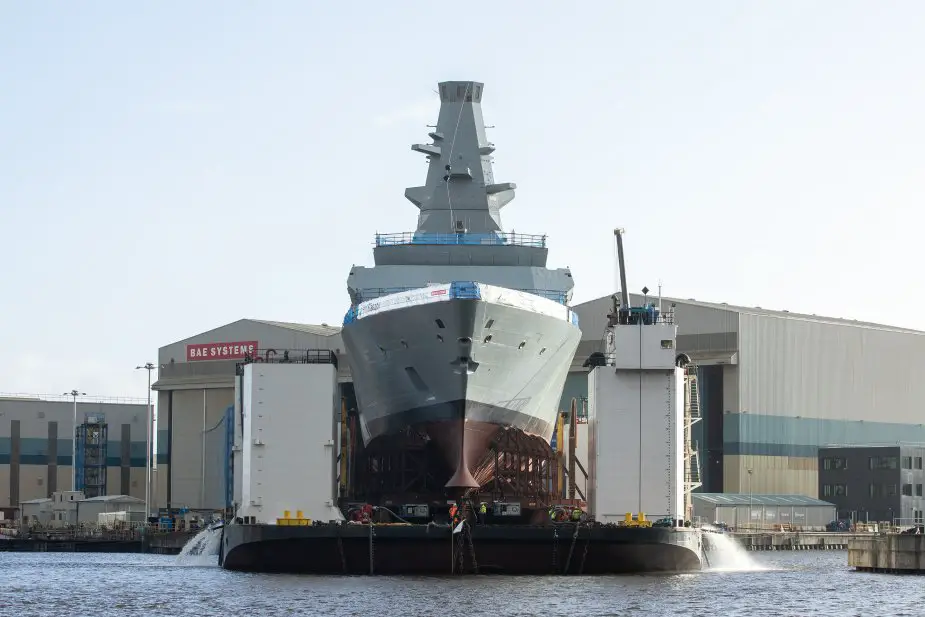Breaking news
BAE Systems floats first Royal Navy's Type 26 frigate HMS Glasgow.
According to information published by BAE Systems on November 28, 2022, the first Type 26 City Class frigate, HMS GLASGOW, has begun the float-off process, which will see her enter the water for the first time.
Follow Navy Recognition on Google News at this link
 Royal Navy's Type 26 frigate HMS Glasgow. (Picture source: BAE Systems)
Royal Navy's Type 26 frigate HMS Glasgow. (Picture source: BAE Systems)
Over the coming days, the ship, currently weighing nearly 6,000 tonnes, will undertake a series of complex manoeuvres that will move her from the BAE Systems Govan shipyard, onto a barge before being towed down river to a deep-water location in the West of Scotland.
Once in position, the float off will involve the base of the barge being slowly submerged over a number of hours until HMS GLASGOW fully enters the water.
She will then return to BAE Systems’ Scotstoun shipyard further along the Clyde, where she will undergo the next stages of outfit before test and commissioning.
The BAE Systems engineers involved in the float off of HMS GLASGOW have been specially trained using the 3D visualisation suite which gives engineers access to a full digital twin of the ship.
They will monitor the ship closely throughout all stages of the process ensuring that the transition is safely managed. The float off process will also be supported by engineers from Defence Equipment & Support, the MOD delivery agent, as well as members of the Royal Navy.
The float off process is a more modern, efficient and low risk way for a ship to enter the water compared to the previous dynamic launches. The process is well proven, having been used for the five Offshore Patrol Vessels built by BAE Systems in Glasgow, the last of which was delivered to the Royal Navy in 2020.
HMS GLASGOW has been under construction since steel was cut in 2017. The second and third ships, HMS CARDIFF and HMS BELFAST, are currently in build in Govan.
The build process for each ship involves its structure being completed in Govan; skilled teams of fabricators and steelworkers construct the units before they are assembled into the forward and aft blocks which are joined together before the ship departs.
In Scotstoun, the ship’s outfit is completed and the complex systems are set to work before test and commissioning takes place. HMS GLASGOW will be delivered to the Royal Navy in the mid-2020s.
BAE Systems' website suggests a displacement of 6,900 tonnes, a length of 149.9 m (492 ft) a beam of 20.8 m (68 ft), and a top speed in excess of 26 knots (48 km/h). The Type 26 frigate will have a core crew of 157 with room for a total of 208.
The propulsion system of the RN ships will have a gas turbine direct drive and four high-speed diesel generators driving two electric motors in a combined diesel-electric or gas (CODLOG) configuration.




























